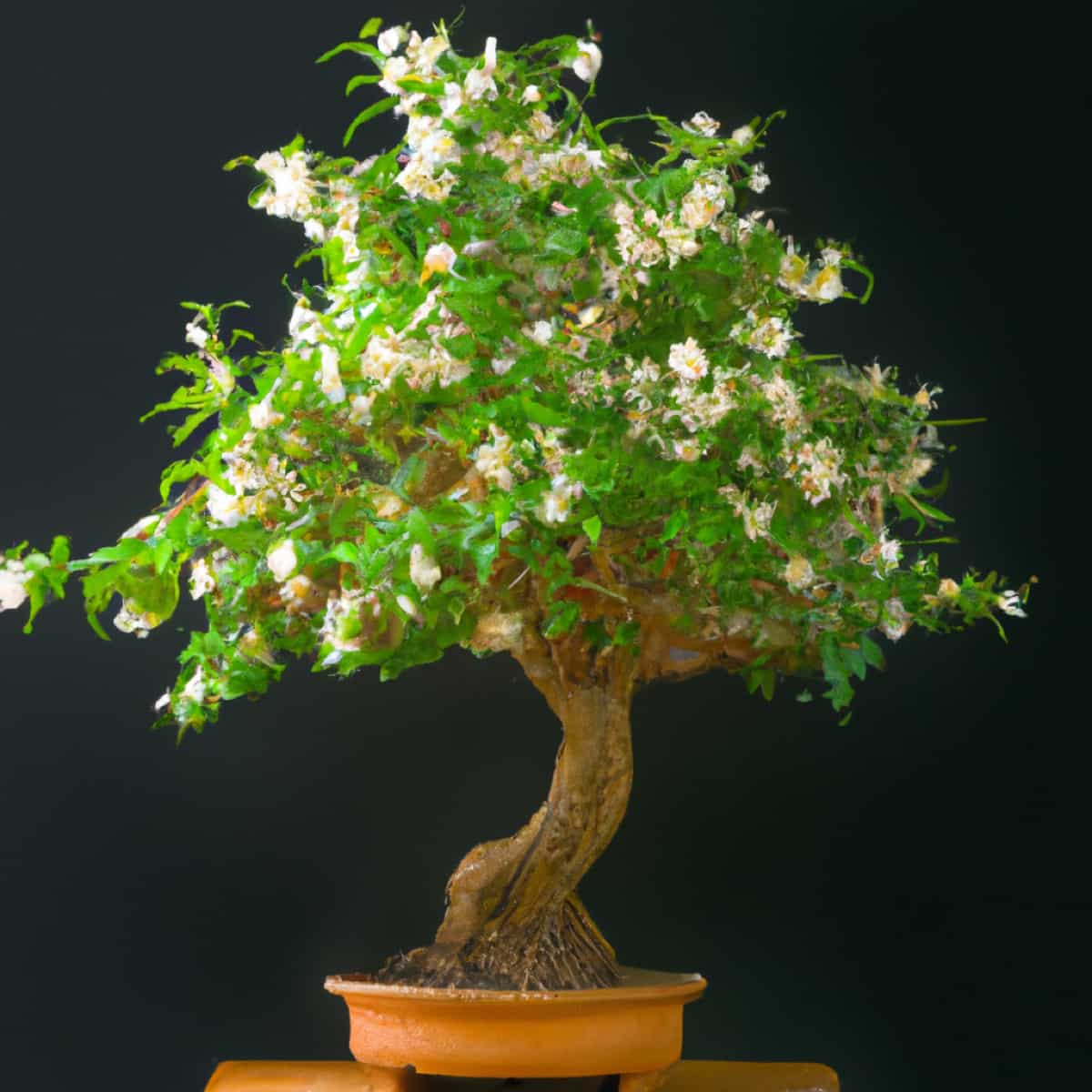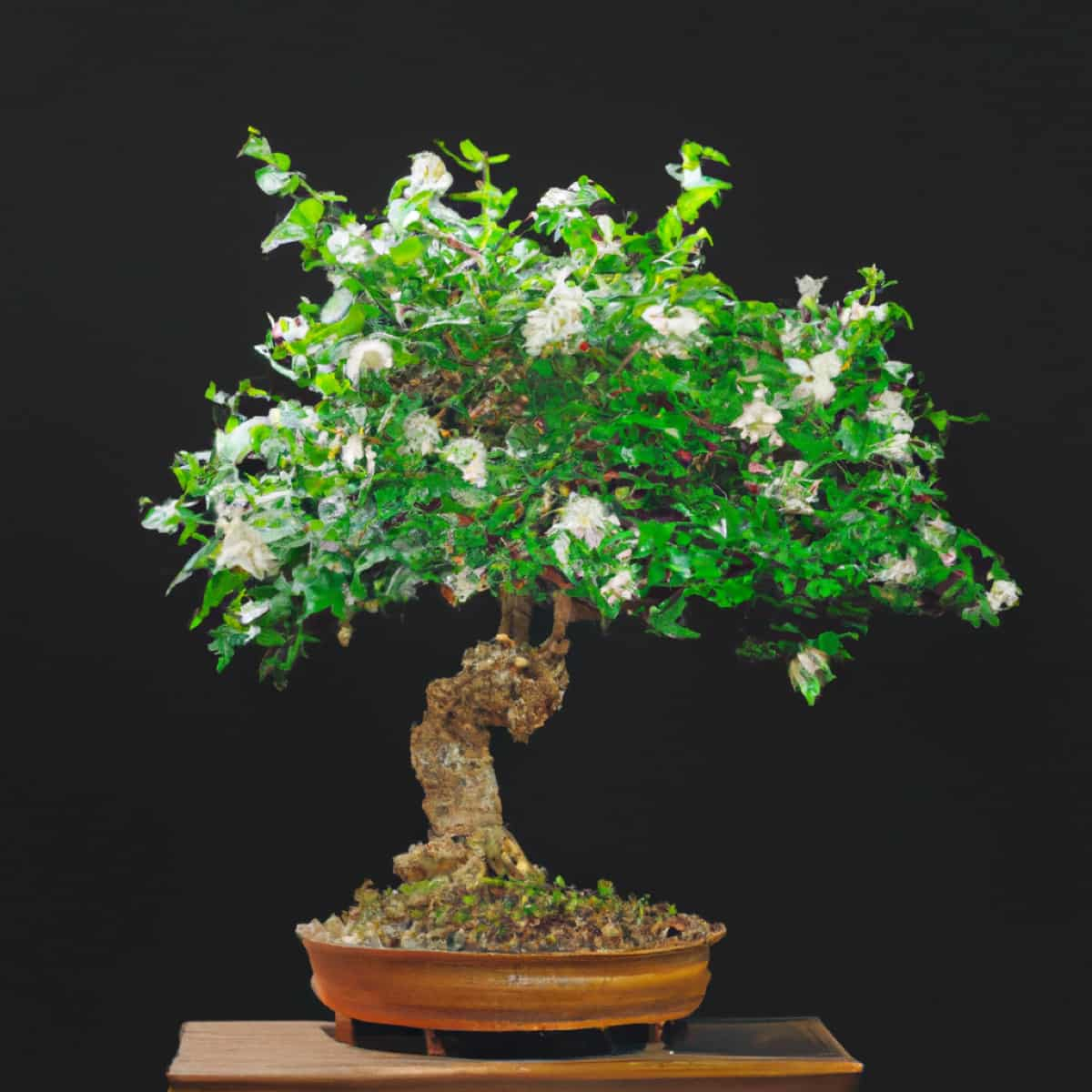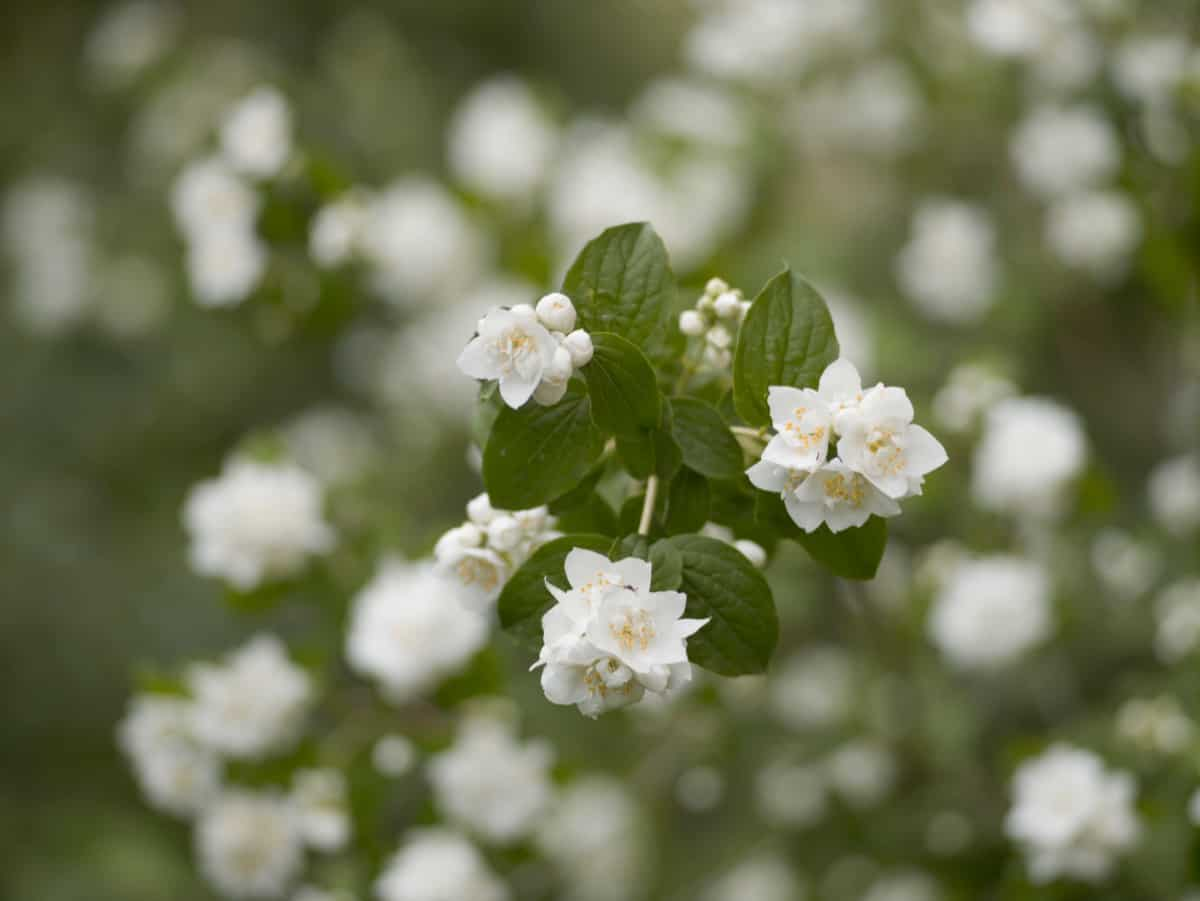Jasmine bonsai indoor is a term that sends a wave of excitement through bonsai enthusiasts and hobbyists. With its vibrant green leaves and delicate white flowers, a Jasmine bonsai carries a delightful scent and can be a beautiful centerpiece in any indoor setting. The plant’s resilience and adaptability make it an excellent choice for beginners and experts seeking to explore bonsai cultivation’s joys. This comprehensive guide will dive into the step-by-step process of growing, caring for, and maintaining a healthy Jasmine bonsai tree.

How to Grow and Care for Jasmine Bonsai
Step-by-step Guide for Growing Jasmine Bonsai
Embarking on the journey of growing a Jasmine bonsai begins with procuring a healthy Jasmine plant, preferably one that is already a few years old. Once you have your plant, the next step is to choose a suitable bonsai pot that ensures proper drainage. A shallow pot with holes at the bottom is ideal. The pot’s size will influence the bonsai’s growth, as the plant will grow only as large as its root system allows.
The following steps will guide you through the planting process. The first step involves preparing the pot. Cover the drainage holes with mesh screens and secure them with wire to do this. This helps keep the soil inside the pot while allowing excess water to drain. Then, add a layer of coarse bonsai soil to the bottom of the pot for better aeration and drainage. Next, remove the Jasmine plant from its original pot.
Be careful not to damage the roots during this process. After removal, prune excessively long or unhealthy roots. Place the plant in the new pot and add bonsai soil, covering the roots entirely. The final step is to thoroughly water the bonsai, ensuring the soil is evenly moist. From then on, your primary role becomes nurturing and caring for the bonsai to ensure it grows and thrives. It involves a combination of indoor planting, soil selection, watering, sunlight provision, pruning, fertilizing, and winter care.
How to Plant Jasmine Bonsai Indoors
Indoor planting of Jasmine bonsai can be a rewarding experience. One must select a spot with plenty of sunlight, as Jasmine bonsai need a good amount of light to thrive. East-facing windows are ideal as they allow the bonsai to receive morning sun, which is less intense than the afternoon sun. Keeping the bonsai away from heat sources or cold drafts is crucial, as these can negatively affect the plant’s health.
Essential Care Tips for Jasmine Bonsai Trees
Care for Jasmine bonsai involves a range of practices, each contributing to the plant’s overall well-being. This includes selecting the best soil mix, knowing when and how to water the bonsai, understanding the bonsai’s sunlight requirements, pruning, fertilizing, and protecting the plant from pests and diseases.
Best Soil Mix for Jasmine Bonsai
Choosing the right soil mix for Jasmine bonsai is critical to bonsai care. An optimal mix will provide the bonsai with the necessary nutrients, allow for good drainage, and provide a suitable environment for root growth. A well-balanced bonsai soil mix often contains equal parts of Akadama, Pumice, and Lava Rock. Akadama is hard-baked Japanese clay specifically used for bonsai because it retains water and nutrients. Pumice helps aerate the soil and improves drainage, and Lava Rock promotes root development.
In case you missed it: How to Make Jasmine Bushy: Best Homemade Fertilizers, Composting and Pruning Tips for Winter, Summer, and Rainy Season

Sunlight Requirements for Jasmine Bonsai
Jasmine bonsai needs plenty of sunlight to thrive. Indoor Jasmine bonsai should be placed near a window where they can receive at least 4-6 hours of sunlight each day. If adequate natural light is unavailable, artificial grow lights can supplement the bonsai’s light needs.
Fertilizing Guidelines for Promoting Growth in Jasmine Bonsai
To promote healthy growth in Jasmine bonsai, regular fertilizing is required. Apply a balanced liquid fertilizer biweekly in the growing season and monthly during the dormant period. Remember to water the bonsai before applying fertilizer to prevent root burn.
Preventing Pests and Diseases in Jasmine Bonsai
Preventing pests and diseases in Jasmine bonsai is crucial for maintaining a healthy plant. Common pests include aphids, spider mites, and scale insects. Regular inspection of the bonsai helps early detection of these pests. To manage these pests, employ insecticidal soap spray or neem oil. Regularly removing dead leaves and branches helps prevent fungal diseases. If the bonsai shows signs of disease, such as yellowing leaves or slow growth, it’s advisable to consult a plant specialist or seek guidance from a bonsai club or online community.
Winter Care for Jasmine Bonsai Trees
Winter care for Jasmine bonsai involves protecting the plant from extreme temperatures. It is recommended to relocate the bonsai to a warmer location if the indoor temperature drops below 60 degrees Fahrenheit. However, Jasmine bonsai need a period of dormancy in winter, so it’s essential to reduce watering and stop fertilizing during this period.
Maintaining the Appropriate Humidity
In addition to the above steps, another crucial step is maintaining the appropriate humidity around your Jasmine bonsai, particularly if it is an indoor plant. Indoor environments often have lower humidity levels than what Jasmine bonsai needs, which can lead to leaf drop. Utilize a water-filled humidity tray as a foundation for positioning your bonsai pot atop it.
In case you missed it: How to Earn 1-2 Lakhs: The Production Cost and Profit Report of 1-Acre Jasmine Cultivation Project
Pruning Techniques for Maintaining a Healthy Jasmine Bonsai
Pruning is an essential aspect of maintaining the health and aesthetics of a Jasmine bonsai. Regular pruning helps maintain the bonsai’s shape, promotes dense foliage, and enhances the bonsai’s overall health. It’s advisable to prune the Jasmine bonsai after it has flowered to avoid removing the buds. Make sure to prune the branches that alter the bonsai’s shape or are growing too vigorously compared to others.
Watering Schedule for Jasmine Bonsai Trees
Jasmine bonsai require regular watering to stay healthy. However, avoiding overwatering is vital, as this can lead to root rot. Maintaining consistent soil moisture levels is crucial. During hotter months, watering may be required daily, while watering can be reduced in cooler periods. It’s always better to touch the soil and check its moisture before watering. If the top inch of soil is dry, it’s time to water the bonsai.

The water will slowly evaporate, increasing the humidity around your bonsai. This simple step can significantly improve the overall health and vitality of your Jasmine bonsai, aiding its growth and maintaining its enchanting appeal.
Conclusion
Growing and caring for a Jasmine bonsai is a rewarding endeavor that requires patience, care, and a bit of botanical know-how. With the guidance in this article, you will be well-equipped to enjoy the serene beauty and delightful aroma of your own Jasmine bonsai.
- Feed Your Flock for Less: Top 10 Tips to Save on Chicken Feed
- Ultimate Guide to Ossabaw Island Hog: Breeding, Raising, Diet, and Care
- Hatching Answers: The Top 10 Reasons Your Chickens Aren’t Laying Eggs
- Eggs and Economics: Breaking Down the Cost of Raising Backyard Chickens
- Defend Your Greens: Proven Methods to Keep Iguanas Out of Your Garden
- Ultimate Guide to Cinnamon Queen Chicken: A Comprehensive Guide for Beginners
- Ultimate Guide to California Tan Chicken: Breeding, Raising, Diet, Egg-Production and Care
- Ultimate Guide to Marsh Daisy Chicken: Breeding, Raising, Diet, and Care
- 10 Types of Chicken Farming Businesses You Can Start for Profits